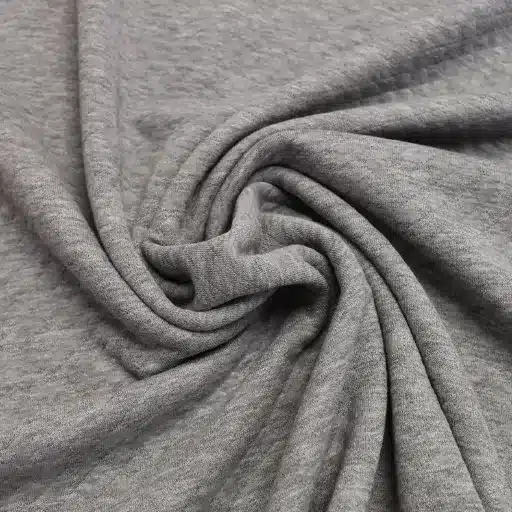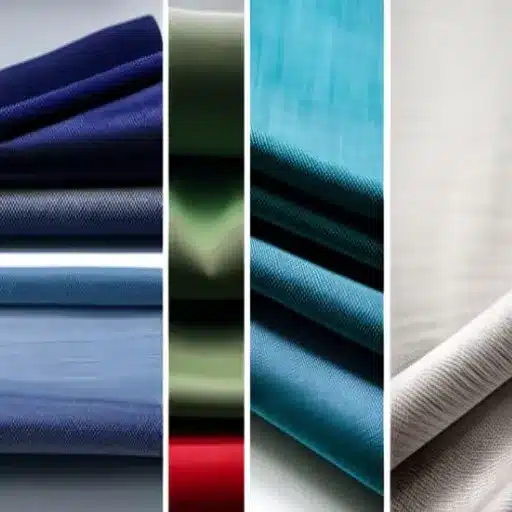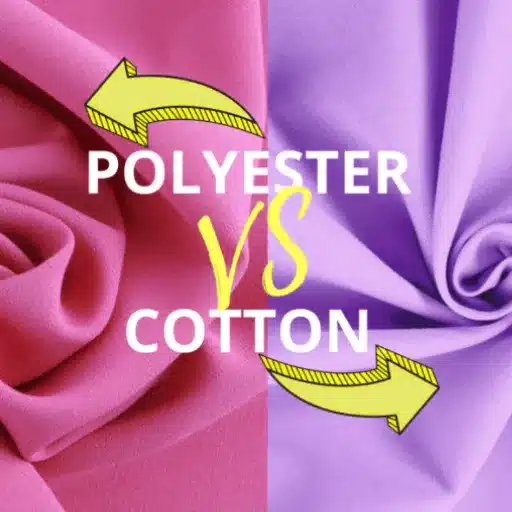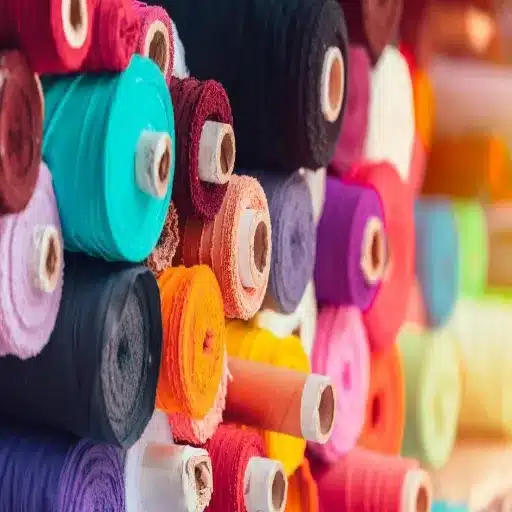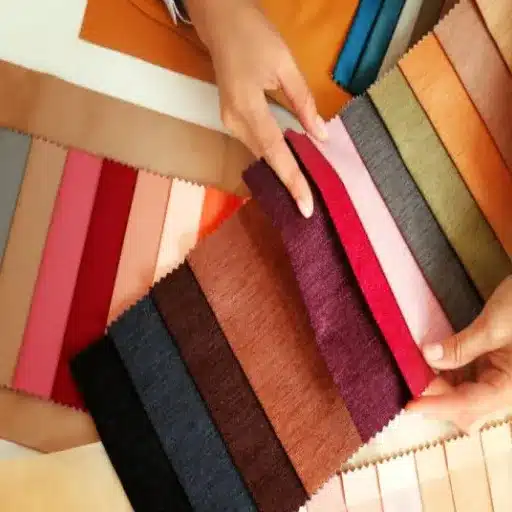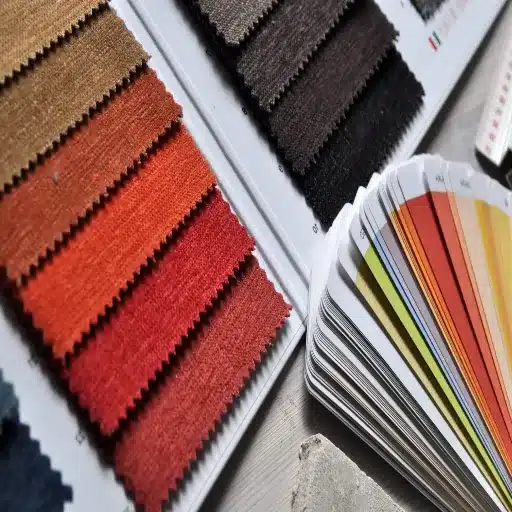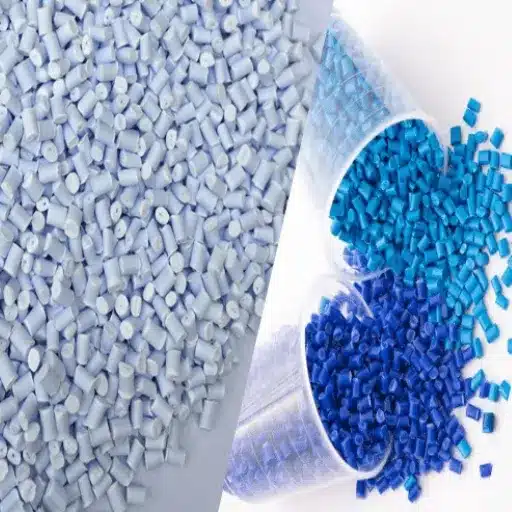As our world continues to change, 2025 is seeing one particular trend take center stage: performance fabrics. Cotton did remain popular due to its soft texture and comfort, but with the rise of polyamide, clothing became something to think about differently. Being lightweight, very strong, and built for versatility, polyamide is spearheading the movement where apparel prioritizes functionality over style. This article examines the significant differences between polyamide and cotton, delves into the current trends favoring high-performance fabrics, and explores why comfort alone may no longer be sufficient to qualify as fashion. So, get ready to discover how innovation is driving change behind the scenes to redefine your wardrobe and, in turn, the essence of modern fashion.
Understanding the Materials: Cotton and Polyamide
What is Cotton?
Cotton is a natural fiber coming from the seed hairs of the cotton plant, generally from the Gossypium genus. It has been cultivated for thousands of years and forms one of the most widely used fabrics due to its soft feel, breathability, and versatility. Cotton fibers can easily absorb water from the atmosphere, making them very comfortable for articles of clothing in various climatic conditions. It accounts for a significant share of the textile production worldwide, with countries such as India, China, and the United States being among the notable producers. Furthering the array of choices are organic and sustainably grown cottons, thanks to innovations in farming and manufacturing, aimed at an environmentally friendly consumer. The hypoallergenic and durable properties continue to solidify cotton’s position as a foundational fiber in the fashion and textile industries.
What Is Polyamide Fabric?
Historical Development
Polyamide fabric, widely known as nylon, was created between the late 1930s and early 1940s. It revolutionized the textile industry with its synthetic polymer composition.
Polyamide fabric, widely known as nylon, was created between the late 1930s and early 1940s. It is produced when chemical compounds polymerize to form strong and durable fibers. Polyamide fabric excels in its excellent elasticity, abrasion resistance, and lightweight properties, all attributes that have enabled its deployment across diverse fields. They are used for activewear, hosiery, and outerwear, as well as diverse heavy-duty applications, such as ropes and fishermen’s nets.
This fabric is ideal for sports and outdoor wear due to its water-wicking feature and quick-drying properties. Incidentally, the synthetic setup allows the fabric to retain colors very well and enables customization, where designs come to life with vibrant colors that last. Then, quite recently, a new technology was introduced that utilizes recycled polyamide as an option, reducing reliance on virgin materials while promoting sustainable features in the textile industry.
Natural Versus Synthetic Fibres Compared
Natural Fibers (Cotton, Wool, Silk)
- Derived from plants or animals
- Soft, breathable, and biodegradable
- Higher comfort levels
- Lower environmental footprint during life cycle
- Less durable than synthetic alternatives
- Requires more resources for production
Synthetic Fibers (Polyamide, Polyester, Acrylic)
- Man-made through chemical synthesis
- Superior tensile strength and elasticity
- Moisture resistance and anti-wrinkling
- Ideal for high-performance wear
- Industrial applications capability
- Recycled options reduce ecological footprint
Innovation in Fiber Blending
This emphasis on sustainability has led to the development of hybrid materials by blending these fibers, thereby combining the benefits of both. One example of this is the blending of natural fibers with recycled synthetics to impart durability and performance features while minimizing environmental impact. These developments thus reflect how the textile industry is actively adapting to a reality that demands both functionality and ecological consideration.
Performance Characteristics of Polyamide vs Cotton、
Durability and Strength of Polyamide
Superior Molecular Structure
Polyamide molecules, with their long molecular chains, offer excellent tensile strength and are suitably resistant to stretching and bending under high stresses. This makes them ideal for demanding applications.
A series of phenomena render common polyamide materials prone to handling issues while maintaining durability. Polyamide molecules, with their long molecular chains, offer excellent tensile strength and are suitably resistant to stretching and bending under high stresses. The higher abrasion resistance lends equally to high tensile strength; hence, under standard friction or wear, they remain prone to handling. This is considered beneficial for activewear, outdoor gear, and industrial textiles where durability is highly prized. This fabric is most suitable for activewear, outdoor gear, and industrial textiles due to its distinguished feature of endurance. Polyamide is significantly better than cotton in terms of resistance to tearing and degradation over time, especially when exposed to moisture or fluctuating temperatures. The enormous versatility and endurance render polyamide outstandingly suitable for modern textiles.
Breathability and Comfort in Cotton
Cotton is highly breathable and comfortable, which makes it a favorable fiber for casual wardrobes and bedding. Cotton has highly absorbent fibers that carry moisture away from the skin, helping to keep one cool and dry, especially in hot or humid environments. Additionally, cotton feels soft to the touch and is unlikely to irritate the skin. Studies show that cotton cloths allow adequate air circulation, while many synthetic alternative materials trap heat. These features make cotton a better choice for clothing intended to be worn for extended periods or in climates that require breathable options. Modern developments in cotton processing have further enhanced cotton’s ability to balance softness with durability, ensuring comfort that lasts.
Moisture-Wicking Characteristics of Synthetic Materials
| Technology | Feature | Benefit |
|---|---|---|
| Microfibers | Enhanced surface area | Faster moisture transfer |
| Dri-FIT Technology | Specialized treatments | Quick evaporation |
| Coolmax | Enhanced breathability | Better temperature regulation |
| Elastane Blends | Added flexibility | Odor resistance |
Synthetic fabrics such as polyester, nylon, and spandex are highly recognized for their superior moisture-wicking properties. Therefore, most activewear and sport apparel brands use them. These fabrics have been designed to pull moisture away from the skin and onto the external face of the garment, where it will evaporate quickly. Much sweat is not retained, allowing a person to cool down more effectively and stay comfortable during physical exertion. Whereas conventional materials absorb moisture, synthetic fabrics repel it and are therefore suitable for individuals who engage in intense training or activities in a humid environment.
Advancements in textile technology have refined the updated syntax of moisture-wicking synthetics. Many of these garments either employ microfibers or undergo treatments, such as Dri-FIT or Coolmax, to facilitate quicker moisture transfer while maintaining better breathability. Hence, while utilizing such improvements in textile technology, fabrics are expected to stay light and functional through hours of use. They are sometimes blended with other materials, such as elastane, to make them more flexible and long-lasting, or to impart odor-resistant properties. This combination of function and durability makes moisture-wicking synthetics a popular choice for working on clothing innovation.
The Role of Nylon in Modern Fashion
Advantages of Nylon in Performance Wear
Physical Properties
- Lightweight and stretchable
- High tensile strength
- Superior flexibility and comfort
- Excellent durability
Performance Features
- Exceptional moisture-wicking
- Fast-drying capabilities
- Odor resistance
- Enhanced breathability
Nylon earned its place as a go-to textile in performance wear, thanks to an uncommon blend of flexibility and durability, coupled with moisture management comfort. Being lightweight and stretchable, nylon clothes fit comfortably and move freely. With its high tensile strength, it resists wear and tear, making it fit and durable for high-impact use. It wicks moisture away from the body very well, keeping athletes dry and comfortable during workouts. Advanced manufacturing processes are further enhancing these limits of nylon, ensuring breathability and resistance to odors-the two most crucial qualities in activewear. Studies confirm that nylon dries faster than natural fibers, thereby improving practicability in both sportswear and casual-performance wear. They create these qualities that make nylon the benchmark material of new-age athletic and performance-driven designs.
Nylon vs Cotton: A Comparative Analysis
| Aspect | Nylon (Polyamide) | Cotton |
|---|---|---|
| Primary Use | Athletic and high-performance clothing | Casual wear, comfort applications |
| Durability | Exceptional abrasion resistance | Good, but less than nylon |
| Moisture Management | Superior moisture-wicking | Good absorption, breathable |
| Environmental Impact | Energy-intensive, petroleum-based | Water-intensive, pesticide use |
| Maintenance | Low maintenance, wrinkle-resistant | Easy wash, prone to shrinking |
| Skin Sensitivity | May cause issues for some | Hypoallergenic, gentle |
In this Nylon-Cotton comparison, both options have values to offer based on individual needs and preferences. Synthetic type, nylon is strong, flexible, and lightweight; hence, it is the best candidate for athletic or high-performance-type clothing. Various conditions would otherwise risk abrasion and moisture contact; nylon stands much better than they all do due to its fast-drying aptitude and brilliance. Being a natural fiber, cotton provides the top-most breathable wear and texture, emphasizing casual wear in terms of comfort. It is hypoallergenic and does not retain much odor, making it a suitable choice for those with sensitive skin.
While one might consider their respective environmental effects, such factors could complicate matters. In contrast, nylon manufacturing is an energy-intensive process that involves petroleum-derived substances and increases its carbon footprint. Cotton production has a lower carbon footprint, although, on the other hand, processing requires a significant amount of water and pesticide use in traditional farming methods. However, this downside of conventional cotton and nylon is slowly being addressed through organic cotton and recycled nylon options. Another argument is that nylon typically lasts longer if it is well-maintained, which could increase its capacity to act as a long-term sustainable development option in specific applications.
Maintenance is another significant aspect to consider. Nylon is less prone to wrinkling and shrinking and can tolerate machine washing without evident signs of wear. Cotton, on the other hand, is easy to wash but tends to shrink and wear out if not washed gently. These differences underscore the importance of choosing a suitable material, considering its purpose, performance requirements, and personal values that may include sustainability and comfort.
Innovations in Nylon Fabric Technology
Bio-Based Nylon
Development from renewable raw materials such as castor oil, significantly reducing carbon footprint compared to petroleum-based production.
High-Performance Blends
Enhanced tensile strength, improved breathability, and superior wear resistance for specialized applications.
Advanced Dyeing
More vibrant colors with superior color fastness while reducing water and energy consumption.
Recent developments in nylon fabric technology have focused on enhancing its performance, sustainability, and versatility. Major innovations include the development of bio-based nylon, from renewable raw materials such as castor oil, as opposed to traditional nylon manufactured from petroleum-based sources. This shift significantly reduces the carbon footprint of nylon production, thereby aligning it with the global environmental agenda on the use of sustainable materials.
Another breakthrough is in the production of high-performance nylon blends. By combining nylon and other fibers, manufacturers have produced fabrics that are stronger in tensile strength, more breathable, and somewhat resistant to wear and tear. The perfect applications for such fabrics are sportswear, outdoor gear, and industrial applications. The dyeing technology has also been evolving to produce more brilliant colors while maintaining color fastness and reducing water and energy consumption.
The recycling technology for nylon has also made great strides. Chemical recycling processes, for example, enable the decomposition of old nylon products in their original form and their reformulation into new fibers, thereby solving the waste problem without compromising quality. These innovations are a testament to the evolution that considers sustainability alongside functionality, making nylon a more contemporary and responsible fiber choice for various industries.
Fashion Trends Shifting Towards Synthetic Fabrics
Consumer Preferences for Performance On Comfort
The Athleisure Revolution
Modern consumers demand clothing that can transition seamlessly from gym to street, prioritizing functionality alongside style. This shift reflects changing lifestyles where active wear becomes everyday wear.
The modern consumer places greater emphasis on functionality in clothing. The demands of active lifestyles and the versatility offered by synthetic fabrics constantly press on that front. Performance properties like moisture-wicking, durability, and flexibility are sometimes considered more important than the traditional emphasis on softness and comfort. This trend is best expressed in the athleisure and activewear categories, where performance means enduring strenuous activities while still looking stylish and fit. Passable performance is expected from certain synthetic fabrics, such as nylon and polyester, which resist wrinkling, shrinking, and water absorption. Meets the alternating requirements of this new generation, something stylish yet practical.
Environmentally Friendly Synthetic Options in Fashion
Recycled Materials
Post-consumer plastic bottles transformed into high-performance polyester fibers
Bio-Based Synthetics
Renewable resources like cornstarch and sugarcane creating durable fibers
Closed-Loop Systems
Complete recycling where synthetic materials can be infinitely reused
The pressure to find sustainable solutions has given rise to breakthroughs in eco-friendly synthetic materials. More and more fashion houses are relying on recycled polyesters and nylons for their lines, which helps to reduce waste generation and the use of virgin resources. A good example is recycled polyester, commonly sourced from post-consumer plastic bottles, thereby breathing new life into materials that would otherwise contribute to environmental pollution.
Meanwhile, bio-based synthetics are being developed as an alternative using renewable resources such as cornstarch or sugarcane to produce a durable and versatile fiber. Thus, this product is designed to perform similarly to conventional synthetics while reducing the carbon footprint of its production. In addition, some companies are attempting to establish closed-loop garment systems, in which synthetic materials can be fully recycled and endlessly reused in new applications, promoting a circular economy.
The emergence of these natural options suggests a slight shift toward less harmful production procedures, which aligns with the growing demands for transparency and environmental responsibility from consumers in the fashion industry.
The Future of Cotton and Polyamide Blends
Developments in textile technologies and increased public awareness about high-performance and sustainable fabrics have been spurring the evolution of cotton and polyamide blends. The aim is to combine the feel and breathability of cotton with the strength and elasticity of polyamide to create a versatile range suitable for all purposes, from casual wear to active wear. Generations of innovation are geared toward enhancing the functionality of these blends by incorporating moisture management, temperature regulation, and antimicrobial properties.
Additionally, measures are taken to further minimize the environmental impact of such blended fabrics. In production, for example, sustainable polyamide is being generated from renewable resources and recycled raw materials. Such advancements significantly contribute to reducing water and energy consumption in the manufacturing process compared to traditional methods. Market reports forecast that the demand of such blends shall continue to be promoted owing to the global emphasis on sustainability and the drive towards innovative fabric solutions that offer a finishing trade-off between performance and responsibility.
Choosing the Right Fabric for Your Needs
Choosing cotton over polyamide
Decision Framework
The choice between cotton and polyamide fundamentally depends on the intended use, environmental considerations, and personal comfort preferences. Each material excels in different scenarios.
I always consider what the end product or the garment needs when choosing between cotton and polyamide. Cotton is a natural fibre that is breathable and hypoallergenic, providing maximum comfort and suitability for daily wear, casual clothing, or bedding. Cotton is smooth and comfortable; its moisture-absorbing properties keep the skin cool and dry. Therefore, for summer clothes, shirts, underwear, or sleepwear, cotton is my choice. Additionally, as cotton is biodegradable and renewable, I think this hair should be conceivable when sustainability becomes a criterion to consider.
In terms of durability, stretch, and lightness, no other fabric is as suitable as polyamide. Because it is considered a synthetic fiber, polyamide offers numerous advantages; it is strong and exhibits excellent abrasion resistance. Being super active, I always try to find polyamide in my activewear materials, swimming suits, or outdoor jackets. However, unlike cotton, polyamide moisture-wicks instead of absorbing moisture; therefore, it is more suitable for high-performance or sportswear. My other considerations are maintenance. Polyamide resists wrinkling and dries more quickly than cotton; hence, it is ideal for any type of gear that typically requires washing and fast drying.
Ultimately, for me, it’s about striking a balance between comfort and functionality when choosing between cotton and polyamide. I opt for cotton when comfort, breathability, and a natural feel are important. However, if I need a high-performance material that is both tough and water-resistant, then polyamide is the best choice. Having an understanding of these distinctions helps me choose the fabric suitable for each situation, ensuring that the end product meets my expectations.
Applications for Polyamide Fabrics
Athletic & Outdoor Gear
- Activewear and sportswear
- Hiking and outdoor equipment
- Running and skiing apparel
- Performance-focused clothing
Travel & Daily Essentials
- Backpacks and luggage
- Swimwear and water sports
- Quick-dry travel clothing
- Low-maintenance garments
Polyamide fabrics will see extensive use and be applied in various areas of application, owing to their strength, moisture repellency, and lightness. Such features make these fabrics my personal choice for high-performance apparel, a category comprising activewear and outdoor gear. When hiking, running, or skiing, I expect polyamide fabrics to withstand wear and tear while keeping the clothes together, all while doing so as comfortably as possible. Wicking water off to dry fast is a blessing when things get tough or the weather is so merciless that you just have to stay dry.
Polyamide fabrics are excellent for washing accessories and daily essentials, as well as clothing. In virtue of the polyamide backpack and luggage, I can resist severe abuse from carrying heavy weights through frequent travel. For swimwear, it is considered the best material, as being water-resistant and stretchable provides good handling during three-pronged exposure: prolonged exposure to water, short exposure to water, and movements. If the basic tenets of being durable, functional, and maintenance-free take precedence, I am more than happy to prefer a polyamide fabric.
Factors to Consider: Comfort, Performance, and Care
| Factor | Considerations | Best Choice |
|---|---|---|
| Comfort | Lightweight, soft texture, breathability, skin sensitivity | Polyamide for lightweight comfort |
| Performance | Strength, stretch, shape retention, moisture management | Polyamide for active use |
| Durability | Abrasion resistance, tear resistance, longevity | Polyamide for heavy use |
| Care | Machine washability, quick drying, heat sensitivity | Polyamide for convenience |
When selecting a fabric for use, I always consider comfort to be paramount. Polyamide tends to be lighter in weight and softer to the touch, which ensures comfort, especially during extended periods of wear. I also appreciate the breathability of some polyamide blends, as they help maintain body temperature. This makes the fabric suitable for both activewear and casual wear—the smooth texture further aids in minimizing irritation, making it particularly useful for people with sensitive skin.
The performance is equally important to me when selecting sportswear or travel gear. Polyamide is undoubtedly a strong contender in this area due to its strength and slight stretch, which allows it to retain its shape even with repeated use. Another benefit is moisture-wicking, which keeps me dry when I sweat or in humid conditions. Additionally, polyamide fabrics are highly resistant to abrasion and tears, and I appreciate that they can withstand rough environments without deteriorating.
I think polyamide has very low maintenance, which is incredibly convenient. Most polyamide items can be washed in a washing machine and dry quickly, which saves a significant amount of time and energy in laundry work. I always check the washing instructions label and try to follow them, as sometimes too much heat from the dryer or iron can damage the fabric itself. With just a little bit of attention and by following the care instructions, I have found that polyamide fabrics certainly maintain their good quality and remain durable in the long run, making them an easy and handy choice for my lifestyle.
Reference Sources
-
Top US Fashion Fabric Trends for Spring/Summer 2025 – Discusses key fabric trends in 2025, including cotton and other materials.
-
The Top Fabric Trends for 2025: What to Expect This Year – Highlights the growing popularity of organic cotton and other sustainable fabrics.
-
These are the Textile Textures Dominating Upholstery… – Explores the role of texture and material trends in 2025.
-
Performance Fabric: Worth Upgrading? – Discusses the benefits of performance fabrics, including durability and maintenance.
-
Sofa Showdown! Choosing the Best Material for Couch 2025 – Highlights the advantages of performance fabrics in various applications.
Frequently Asked Questions (FAQs)
What separates polyamide from cotton?
Polyamide is a synthetic material made from polymers, while cotton is a natural fiber derived from the cotton plant. Polyamides are generally developed to be tear-resistant and elastic, thereby making it good for activewear, while cotton earns its name for being soft and breathable. Thus, when considering polyamide versus cotton, one may note that polyamide stands up against the wearing effects better, whereas, cotton-soaked with moisture-provides comfort for everyday wear. Each has its own mechanism to offer progress, and hence, the choice depends upon how a garment will be worn.
Is polyamide better than cotton for underwear?
Polyamide has commonly been preferred for underwear because it resists wrinkles better and offers greater elasticity than cotton. When blended with elastane, polyamide yields a snug fit that is remarkably comfortable to wear. However, cotton underwear remains in high demand due to its natural fibers and the comfort they provide. Cotton absorbs moisture, which helps keep air. Ultimately, it comes down to personal preference and what the wearer expects from the garment, whether it is polyamide or cotton for underwear.
In terms of durability, what is the comparison of polyamide fabrics to cotton fabrics?
Polyamides, generally speaking, are more resistant to wear than cotton fibres. In fact, they are known for their resilience and ability to withstand wear and tear. Therefore, they can resist activewear and outdoor garb. Cotton, above all, is soft and comfortable, but copious wear might slow down, particularly in high-stress areas. Conversely, cotton fabrics, such as thick cotton, can also be quite substantial. If someone is looking for long-lasting cloth, then polyamide is an advantage over cotton.
Can cotton blends, therefore, enhance the properties of either fibre?
Absolutely! Cotton blends provided the necessary enhancement in particular properties of both cotton and polyamide. For example, a cotton-polyamide blend retains the comfort and breathability offered by cotton but imparts durability and elasticity to the fabric. Such fabrics dry quickly and resist wrinkling, making them apt for everyday use. Hence, these blends present the best opportunity for balancing the advantages of natural fibers, such as cotton, with those of manmade fibers.
Does polyamide dry faster than cotton?
Yes, polyamide definitely dries faster than cotton. While cotton can hold moisture quite well, it takes much more time to dry than synthetic fibers such as polyamide. This fast-drying property is one of the primary reasons why polyamide is chosen for activewear and travel garments, as being able to wick moisture away is of utmost importance. However, cotton is favored for its comfort and softness, even though it may take a longer time to dry. Polyamide is, therefore, an option to consider if one is looking for fabrics that wick away moisture quickly.
What are the environmental impacts of polyamide versus cotton?
Cotton is a natural fiber, which may mean it has enhanced environmentally friendly properties if harvested sustainably. Furthermore, conventional methods of cotton production may employ copious amounts of pesticides and water. In contrast, polyamide represents a synthetic-based fiber and is therefore derived from petroleum resources, highlighting its environmental impacts. Yet, recycling innovations and bio-based polyamide processes help to solve numerous environmental concerns. The comparison between polyamide and cotton also necessitates an examination of the ecological impacts of their production processes.
Why would a person pick polyester or polyamide over cotton?
This is because polyester/polyamide is much more durable and more moisture-wicking than cotton. Polyesters and polyamides are commonly used in high-performance fabrics, making them more suitable for sports and outdoor activities. Wrinkle-resistant and shape retention are qualities that polyesters and polyamides own, while cotton tends to stretch and sag after prolonged use. Polyester or polyamide is for the consumer who seriously views apparel from the perspective of functionality and durability, as compared to cotton.

